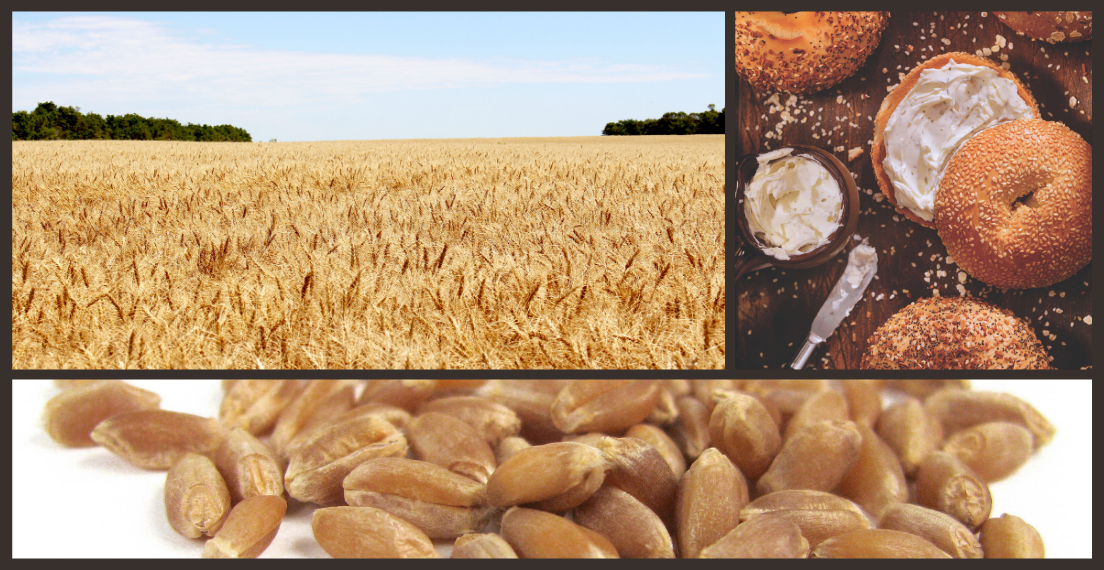Defining U.S. Wheat’s Comparative (Competitive) Advantage: Hard Red Spring
In the increasingly competitive global wheat market, it is important to review the advantages that U.S. wheat delivers to millers and bakers. This post examines the advantages that hard red spring wheat brings to the market.
This post discusses the value U.S. hard red spring (HRS) wheat brings to the global market. HRS is the second largest wheat class with a five-year annual average production of 13.7 million metric tons (MMT)or about 504 million bushels as of 2020/21. It accounts for about 26% of the total wheat produced in the United States.
The three subclasses of HRS include Dark Northern Spring (DNS) with 75% or more of dark, hard and vitreous (DHV) kernels; Northern Spring (NS) with 25% or more but less than 75% DHV kernels; and Red Spring (RS) with less than 25% DHV kernels.
Milling Advantages
U.S. HRS wheat poses some unique opportunities and challenges to the miller. HRS is the hardest of all the non-durum classes of wheat but also has the smallest average kernel size. Millers experienced with HRS in their grist know excellent results can be achieved with some adjustments.
First, adjusting the screen sizes of separating equipment in the cleaning house will reduce the risk of losing good quality but also results in smaller kernels. A longer conditioning time is needed to ensure the tempering water fully penetrates the harder HRS wheat kernels. Optimal conditioning time is dependent on several factors, but in most cases, HRS will require a minimum of 20 hours for optimal conditioning time. The miller’s reward for these adjustments is higher than average flour yield from the harder, more compact HRS endosperm. The hard endosperm creates excellent granulation through the break system to provide an abundance of stock to the purifiers. This allows the miller to maximize flour with low ash and excellent color throughout the head end of the mill.
Baking Advantages
Because of the high protein content and strong dough characteristic of U.S. hard red spring wheat flour, it is commonly used in a blend to improve the performance of a lower protein base flour. Only a few end products such as artisan-style bread, whole wheat products, and bagels may be made with 100% HRS flour to achieve optimal performance. For nearly any type of bread or leavened bread product such as thick pizza crust, the greatest value of HRS flour comes from blending it with a lower protein, lower-cost flour to create optimal ingredients for individual products. In markets where consumers demand a “clean label,” HRS flour blended with HRW or other wheat flour can create better water absorption and loaf volume while using less or no chemical dough improvers. And many pasta makers around the world know that when traditional durum wheat semolina is not needed, HRS wheat flour or semolina is a very acceptable alternative.
U.S. Wheat Advantages
As we highlight each class in this series, let us not forget the advantages that all U.S. wheat classes bring to the market. First, and perhaps the most important, is consistency in quality and supply. Although each new crop year brings different challenges and opportunities, U.S. wheat is always available to the global market. Second, U.S. wheat delivers variety. Wheat is a raw material manufactured into a bakery ingredient, flour. The flour made from each unique class of U.S. wheat brings value to the market in the unique quality characteristics to make a variety of baked goods and noodles. It is also important to understand the value of blending flour from one or more types of wheat to optimize the flour performance at a minimal cost.
Each region, country, and culture have wheat-based food products that are uniquely their own. With six unique wheat classes, the United States has the right wheat class to deliver the optimal quality and value for every variety of products on the market.
Learn more about the six classes of U.S. wheat here or leave a question in the U.S. Wheat Associates’ “Ask The Expert” section.
By Mark Fowler, USW Vice President of Global Technical Services
Read more about other U.S. wheat classes in this series.


